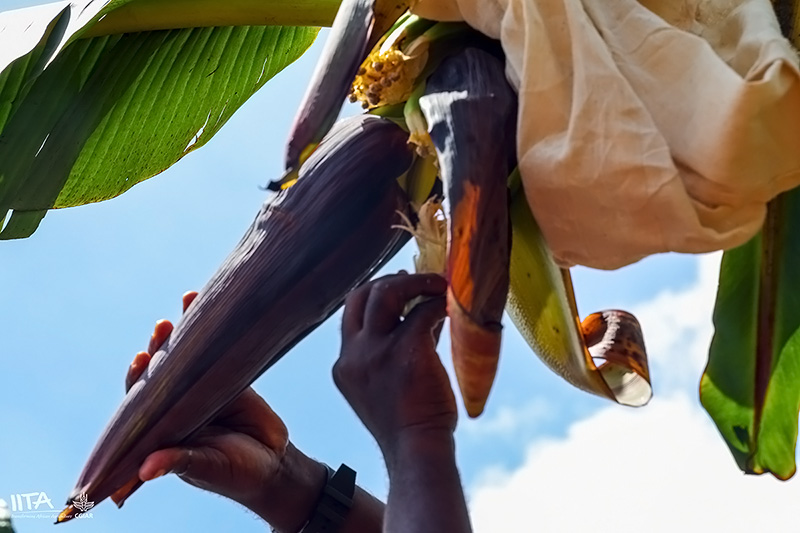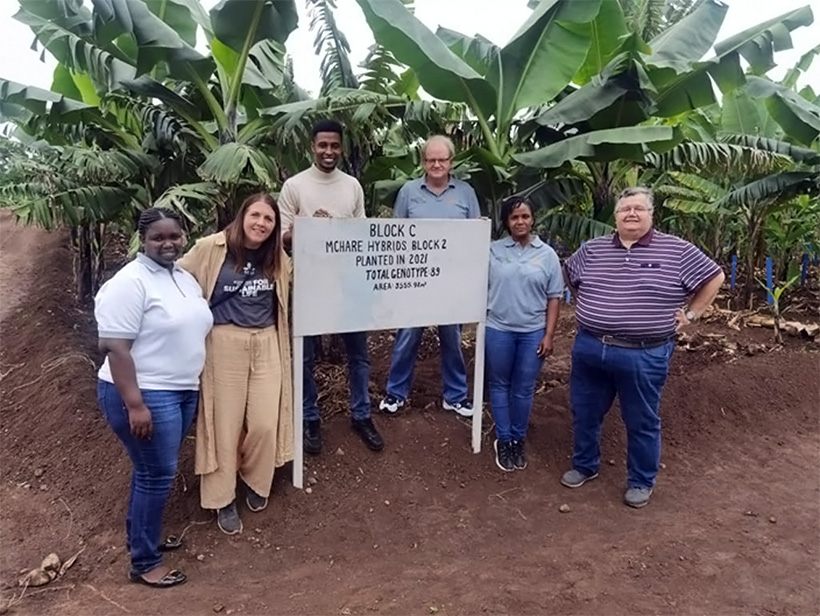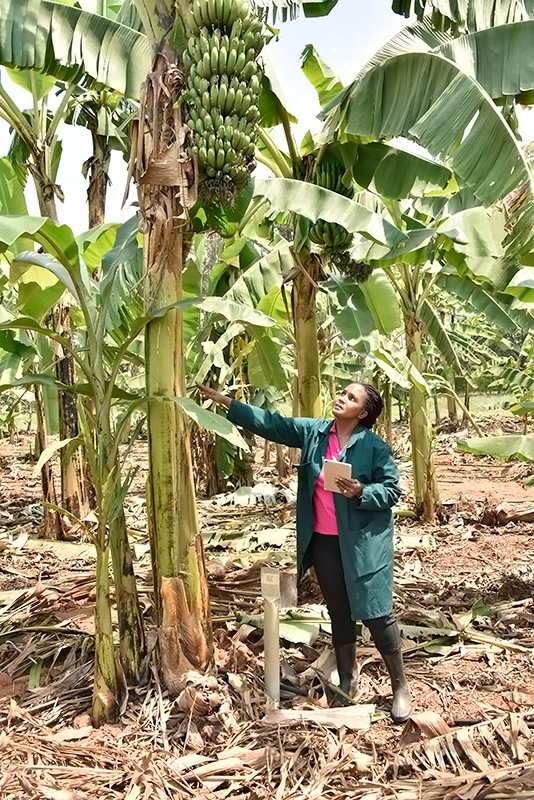
Picture 1. Hand pollination of a banana flower
Banana breeding is a complex, expensive and time-consuming process because bananas have reduced fertility and a long cycle, taking decades to develop and release new varieties. However, recent research by IITA-CGIAR improves drastically the efficiency of banana breeding, paving the way for faster genetic gains and sustainable food production.
In recent years, we have seen significant achievements in plantain and matooke breeding, including the release of PITA 3 (a plantain hybrid), the release of matooke hybrids like TARIBAN 1-4 in Tanzania in 2021 and the recent release of NARITA 17, a high-yielding, disease-resistant Matooke banana variety officially released on 21st March 2025 in Uganda. These achievements are a testament to the power of collaborative breeding programs, for example the National Agricultural Research Organisation (NARO)-Tanzania Agriculture Research Institute (TARI)-IITA partnership. However, the journey to develop and release new varieties can be long and arduous, taking up to 20 years or more.
Researchers from IITA have developed a genetic model that can significantly reduce the time it takes to make breeding decisions. By analyzing the genetic variation and correlation between production cycles in diploid Mchare banana hybrids (which are highland cooking bananas), they have found that selecting hybrids in the first cycle of production (plant crop) can be just as effective as waiting for
the second cycle (ratoon crop) and third cycle which is routinely done. This means that breeders can save at least two years in the breeding process, enabling faster decisions, leading to greater genetic gain.
Dr Violet Akech and co-workers used a novel approach to partition genetic variation into additive and non-additive components, estimate genetic parameters including correlation between traits and between cycles of production. The results showed that additive variation is the strongest genetic variance for yield-related traits, indicating that improving parents and selecting the best-performing parents can lead to significant genetic gains. The study also found high and positive correlations among yield-related traits, suggesting that these traits can be enhanced simultaneously.
The results of this study can be applied to various banana breeding programs, including the diploid Mchare breeding program in Tanzania, and serve as a blueprint and proof-of-concept for triploid and tetraploid improvement programs. By adopting this new approach, breeders can optimize their breeding pipeline, making it more efficient and effective.
This work, supported by the Gates Foundation, has the potential to make a significant impact on global food security. This breakthrough is built on extensive IITA collaborations, particularly with the Swedish University of Agricultural Sciences (SLU), where Dr Akech completed her doctoral studies focusing on the genetic improvement of bananas for East Africa.
For more information on this research, read the full article by Akech et al. (2025)

Assoc. Prof Therese Bengtsson (2nd left) and Prof. Rodomiro Ortiz (right) from SLU, with Dr Violet Akech (2nd right) and IITA team visiting Mchare hybrid evaluation trials at IITA in Arusha.
Contributed by Violet Akech, Moureen Awori and Rony Swennen




No Comments